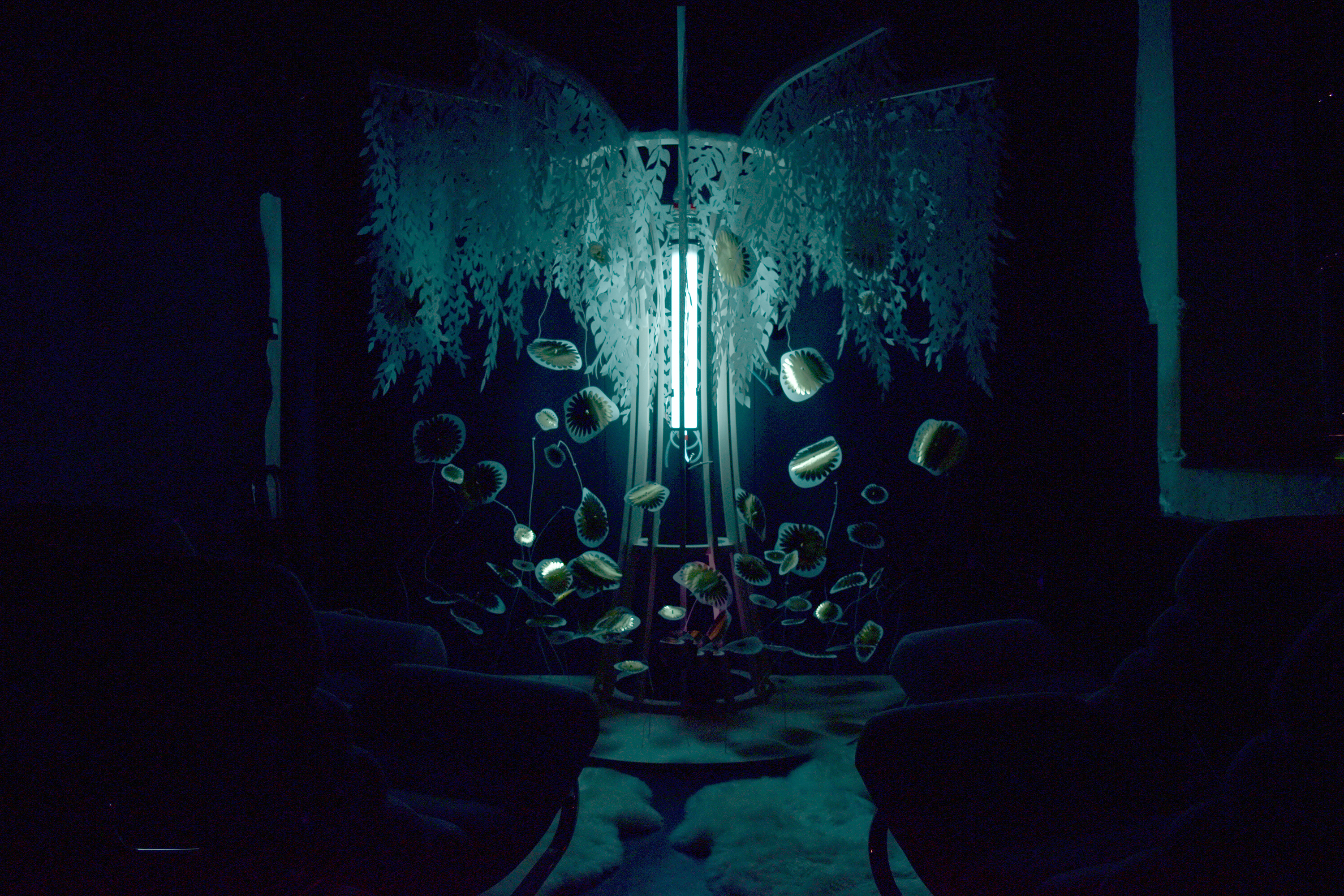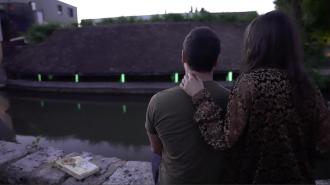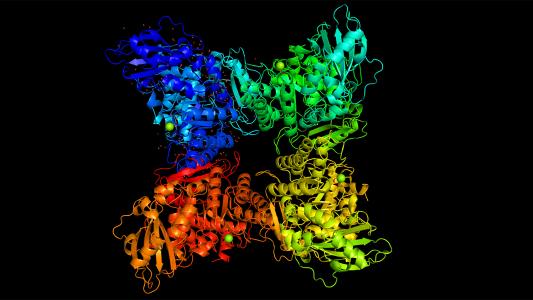For 17 minutes, exhausted vaccination volunteers and those waiting post-jab can sit bathed in soothing music and an ephemeral aquamarine glow. The light is emitted from a long cylindrical canister embedded into a “tree;” nearly half fall fast asleep, French newspaper L’Echo Republicain reported; most feel recharged, as bioluminescent bacteria offer a kind of light therapy.
This is the Glowzen Room, and the aurora comes courtesy of French startup Glowee, which harnesses bioluminescent bacteria to light public spaces. Gloewee had piloted a similar waiting room already at Paris-Charles de Gaulle airport.
But the ambition is to bring the glow beyond specialized rooms and to the streets themselves, and Glowee has found a willing partner for this ecologically friendly lighting experiment in Rambouillet, a commune of 27,000 roughly 30 miles southwest of Paris.

Rambouillet wants to become its own City of Light, announcing a partnership with Glowee in 2019 that will eventually lead to lighting the commune’s tree-lined Place André Thomé et Jacqueline Thomé-Patenôtre.
“Our goal is to change the way in which cities use light,” Glowee founder Sandra Rey told the BBC.
“We want to create an ambiance that better respects citizens, the environment and biodiversity – and to impose this new philosophy of light as a real alternative.”
The power of bioluminescent bacteria: Glowee’s light pylons host a species of oceanic bioluminescent bacteria called Aliivibrio fischeri. The bacteria are gathered from the French coast, and live in a medium of saltwater and nutrients inside Glowee’s tubes.
When exposed to oxygen, Aliivibrio fischeri metabolize the nutrients, producing the glow. To turn them “off,” you simply cut off the airflow. Because this is part of their normal activity, the lights require very little energy, the BBC reported; just what is required to provide their food.
That low energy requirement means bioluminescent bacteria could provide an efficient, sustainable form of light, Rey claims. While LED bulbs produce cheaper light, they still require electricity, which is (in most countries) predominantly generated by burning fossil fuels.
Glowee’s lights require less electricity to run than an LED light, the company says, and can be produced using less water and with a smaller carbon footprint than bulbs. The liquid medium itself is also biodegradable.
While this is all well and good, where the bioluminescent bacteria fall short is in the most obvious — and important, from a public safety perspective — the amount of light they produce.
French startup Glowee harnesses bioluminescent bacteria with the intention of creating a more eco-friendly, sustainable way to light public spaces.
Kind of dull: Vanderbilt professor Carl Johnson laid out the challenges to Glowee’s vision.
“First, you have to feed the bacteria and dilute them as they grow,” Johnson told the BBC.
“That’s not so easy. Also, the phenomenon will be very temperature-dependent and I doubt that it will work in the winter. Third, bioluminescence is very dim compared to electrical lighting. But perhaps they have improved the luminescence intensity.”
Glowee’s bioluminescent bacteria can currently produce 15 lumens per square meter, the BBC reported — well short of the 25 lumens/sq meter mark that is generally considered the threshold for park and garden lighting. Common LED light bulbs easily produce over 100 lumens, in comparison.
To bridge that gap, Glowee is currently working to optimize the bacteria, including genetically modifying them to be more efficient in their light production and less sensitive to temperature, Interesting Engineering reported.
“The ideal temperature for these micro-organisms is between 23 and 25°C. We are still working on this point,” Rey told L’Echo.
Glowee is currently working to optimize the bacteria, including genetically modifying them to be more efficient in their light production and less sensitive to temperature.
While currently only available in the tube lights, Glowee plans on making other bioluminescent installations, like furniture. Bioluminescent bacteria are unlikely to replace electric lighting, Rey conceded to L’Echo, but could supplement it, especially in pedestrian areas.
“We are advancing little by little,” Rey told the BBC. “But we’ve made enormous steps already and our philosophy of light is a response to the crisis humanity is facing.”
We’d love to hear from you! If you have a comment about this article or if you have a tip for a future Freethink story, please email us at [email protected].






